Exploring 500,000 Engagement Ring Choices in Gem Industry
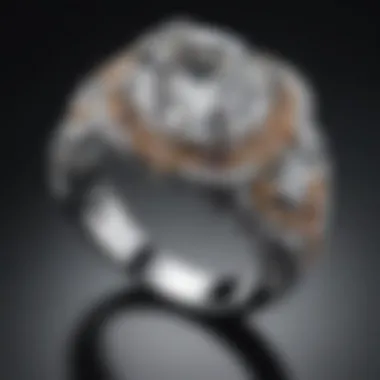
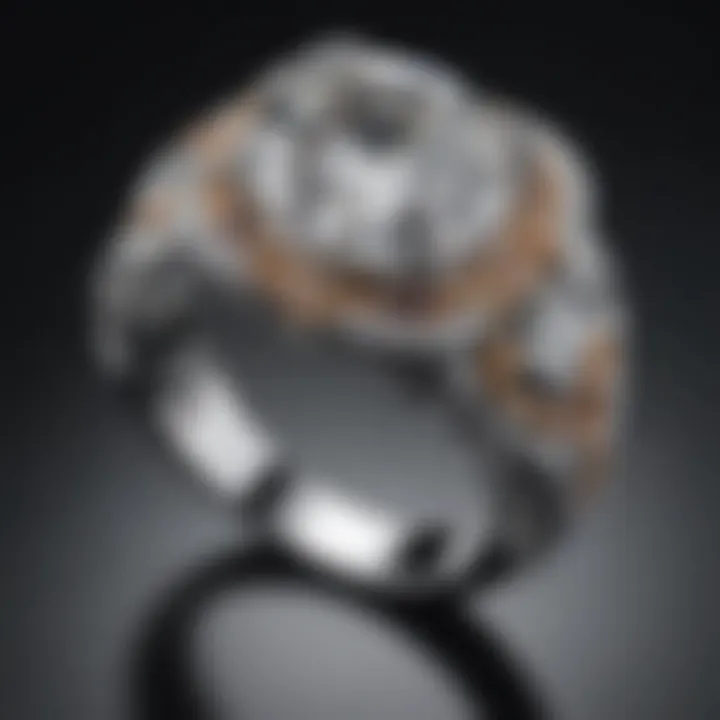
Intro
Engagement rings hold a significant position in the gem industry, particularly those valued around 500,000. Such rings are not just pieces of jewelry; they embody love, commitment, and individual expression. This article delves into the intricacies of this exclusive category, focusing on its market dynamics, craftsmanship standards, and the materials that elevate these rings into the luxury segment.
Consumers today are not merely purchasing rings; they seek an experience that encapsulates deep emotional meanings and tangible value. Understanding the processes involved in creating these high-end pieces can offer insights vital for gem enthusiasts, collectors, and those involved in jewelry design.
By analyzing the trends and cultural impacts related to high-value engagement rings, readers can be better prepared to make informed decisions within the luxury gemstone market.
Gemstone Overview
Definition of Gemstones
Gemstones are naturally occurring minerals or rocks that are refined and cut to enhance their aesthetic appeal. These pieces are often valued for their rarity, beauty, and the skill required to transform them into ornamental jewelry. High-value engagement rings typically feature gemstones that are not only beautiful but also have a history or significance that contributes to their overall worth.
Classification of Gemstones
Gemstones can be broadly categorized into two types: precious and semi-precious. Precious gemstones, such as diamonds, rubies, sapphires, and emeralds, are highly coveted due to their rarity and durability. Semi-precious stones, like amethyst or garnet, also have beauty but are generally more accessible in terms of price and availability.
"The value of a gemstone is not solely determined by its physical attributes but is also influenced by market demand and cultural significance."
Understanding these classifications helps buyers navigate the complex landscape of engagement rings and make choices that resonate with their personal values and preferences.
Historical Significance
Origins of Gemstone Use
The use of gemstones can be traced back thousands of years. They have been utilized not only for adornment but also for their believed mystical properties. Ancient civilizations often associated particular stones with specific powers or attributes, making them significant in rituals and social status.
Cultural Insights: Gemstones in Ancient Civilizations
Throughout history, gemstones played a vital role in various cultures. For instance, in Ancient Egypt, turquoise and lapis lazuli were highly revered. Their use in jewelry indicated wealth and power. Similarly, in Ancient Rome, the emerald was associated with Venus, the goddess of love, further emphasizing the connection between gemstones and love.
This historical context gives depth to contemporary perceptions of engagement rings, enriching their significance beyond mere aesthetics.
Understanding the , Engagement Ring Market
The engagement ring market, especially at the higher price points like 500,000, represents a unique intersection of luxury, culture, and personal expression. This aspect of the gem industry is not merely about aesthetics; it encompasses profound meanings and social expectations. Understanding this market reveals the intricacies behind consumer decisions and craftsmanship, contributing to the broader narrative of engagement traditions.
Market Overview
The engagement ring market has evolved through decades, with significant growth in both demand and design sophistication. The influx of online retail and global access to gemstones have reshaped how consumers approach their purchases. The market now exists within a framework where buyers seek not only a piece of jewelry but an investment and a symbol of commitment. Understanding the nuances of this market involves recognizing key player dynamics, including jewelers, designers, and gemstone suppliers.
In volumes, the engagement rings priced around 500,000 indicate a niche sector, but by no means is it devoid of relevance. These rings often come with unique value propositions such as bespoke design, rarity of materials, and high artisan involvement. High-value rings also attract consumers interested in the prestige associated with ownership. This creates a diverse consumer base, from gem enthusiasts to those with a focus solely on luxury status.
Historical Context
Historically, engagement rings symbolize commitment, a concept that has persisted across cultures for centuries. The tradition of presenting rings began in ancient Egypt, where rings made of intertwined reeds symbolized love and commitment. As civilization progressed, materials evolved from simple band styles to precious metals and illustrious stones, notably diamonds, introduced in the 19th century.
In modern history, the De Beers marketing campaigns in the mid-20th century firmly established the diamond engagement ring as a staple of romance and societal expectation. Today, high-end rings often combine historical significance with contemporary designs, bridging the gap between old traditions and modern aesthetics. The historical journey allows consumers to appreciate the cultural weight their investments carry.
Current Trends
Current trends in the 500,000 engagement ring market highlight a shift toward personalization and unique designs. Many buyers today prefer custom pieces that reflect their individual tastes rather than the standard offerings. There is also an increasing demand for ethically sourced gemstones, prompting jewelers to adopt transparent supply chains.
Sustainable practices are becoming more significant as consumers grow aware of environmental issues surrounding gem mining. The focus is shifting not just to the beauty of the engagement ring, but also to its origin.
Colorful gemstones like sapphires and emeralds are gaining popularity alongside traditional diamonds, as couples seek originality. Additionally, clients are valuing craftsmanship, with many willing to invest time to discuss design with jewelers who demonstrate skill and artistry.
In summary, understanding the 500,000 engagement ring market delves into the interplay of market dynamics, historical significance, and evolving trends. This knowledge aids potential buyers in making informed decisions while enriching the cultural narrative of engagement rings.
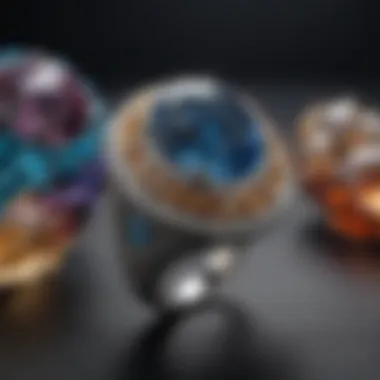
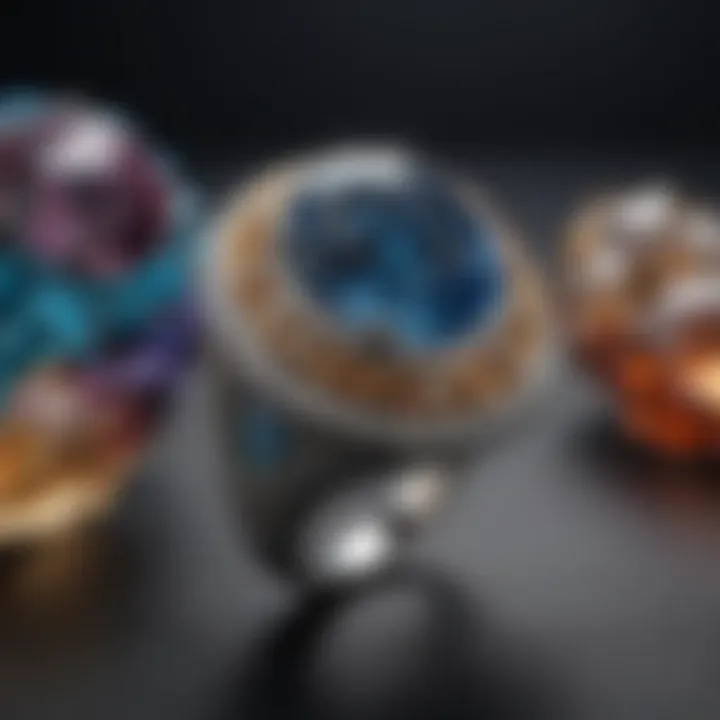
Craftsmanship and Design
Craftsmanship and design are pivotal in defining the allure of high-value engagement rings. The precision and care that go into making these pieces directly correlate with their aesthetic appeal as well as their market value. Each ring represents not just a singular choice, but a blend of artistry, tradition, and personal expression.
In the realm of luxury engagement rings, the details matter. Custom design allows couples to personalize their choice, ensuring it resonates with their relationship. The importance of the craftsmanship lies not only in the skill of the jeweler but also in the story the ring tells. High-quality craftsmanship can enhance both the beauty and durability of the ring, which is important for long-term investment.
Materials Used in High-End Rings
High-end engagement rings often feature a variety of materials, contributing to their status and appeal. Common materials include:
- Precious Metals: Gold, platinum, and rose gold are predominant choices. Each has a distinct look and feel and contributes to a ring's overall value.
- Gemstones: The central stone varies from diamonds to colored gems, which add character to the ring, as well as its luxurious reputation.
The choice of materials reflects the overall vision and desire of the buyer while offering durability and timelessness.
The Role of Gemstone Selection
Diamonds
Diamonds are the most recognized choice for engagement rings. Their unmatched hardness makes them suitable for everyday wear. The brilliance and clarity of a well-cut diamond amplify its aesthetic, making it a preferred option among couples. Additionally, diamonds hold a significant market demand, which favors their investment potential. However, the price can vary greatly depending on cut, clarity, color, and carat weight, which can make for complex purchasing decisions.
Sapphires
Sapphires, particularly blue sapphires, have gained popularity as alternatives to diamonds. They symbolize loyalty and nobility, appealing to those seeking something unique. Their hardness is second only to diamonds, providing great durability. Additionally, sapphires are available in several colors, allowing for personal expression. The key characteristic of sapphires is their stunning color saturation. Yet, they may not have the same level of market recognition as diamonds, impacting their resale value.
Emeralds
Emeralds are favored for their rich green hue. Unique among gemstones, they have natural inclusions known as 'jardin,' which can make each emerald distinct. Their rarity can drive up the market price, making them a significant investment choice. However, emeralds are softer than sapphires and diamonds. This characteristic means they might require more care to maintain their beauty over time.
Custom Stones
Custom stones refer to alternative gemstones chosen for personalization and uniqueness. These choices can range from rare gems like tanzanite to more commonplace options like morganite. They allow couples to reflect their individual styles and preferences. The versatility of custom stones can be appealing, offering significant options for personalization. However, the market for reselling custom stones might not be as robust compared to more traditional gemstones like diamonds and sapphires.
Influences of Fashion in Jewelry Design
The fashion industry significantly impacts jewelry design. Trends fluctuate, with some eras favoring minimalistic designs while others embrace elaborate settings. Celebrities also play an essential role in shaping public preferences. Current trends include vintage-inspired designs, ethical sourcing of materials, and a shift towards unique gemstones. As these influences evolve, they shape consumer expectations in the engagement ring market.
Investment Potential of Engagement Rings
Understanding the investment potential of engagement rings around the $500,000 mark is crucial for collectors and gemstone enthusiasts. These rings serve not only as symbols of commitment but also as assets that can appreciate over time. This dual function makes them an intriguing option for those looking to blend personal sentiment with financial prudence.
Value Retention
When it comes to high-value engagement rings, value retention is a key consideration. Generally, luxury items like these can retain their worth due to various factors. The quality of materials used, rarity of gemstones, and craftsmanship all play significant roles.
Several aspects contribute to value retention:
- Brand Reputation: Rings from renowned jewelers often hold their value better.
- Market Trends: Demand for certain styles or stones can affect resale value.
- Condition: The condition of the ring is vital; well-maintained pieces offer better resale potential.
Overall, engagement rings in the luxury sector have historically shown good value retention compared to general jewelry items.
Market Demand Dynamics
The market dynamics surrounding high-value engagement rings can be complex. Understanding these dynamics is essential for buyers considering their long-term investment. Key factors influencing market demand include:
- Cultural Trends: Shifts in societal norms can affect what consumers value.
- Economic Conditions: In times of economic prosperity, luxury items tend to see increased demand.
- Technological Advancements: Improved techniques for gemstone treatment and ring customization can elevate demand.
Additionally, some gemstones have established themselves as investment-worthy. Diamonds, for example, maintain strong market interest due to their timeless appeal, while colored gemstones like sapphires and emeralds are gaining traction among modern collectors.
Reselling Options
For those considering investment in high-value engagement rings, understanding reselling options is critical. Several avenues exist for reselling these luxury items:

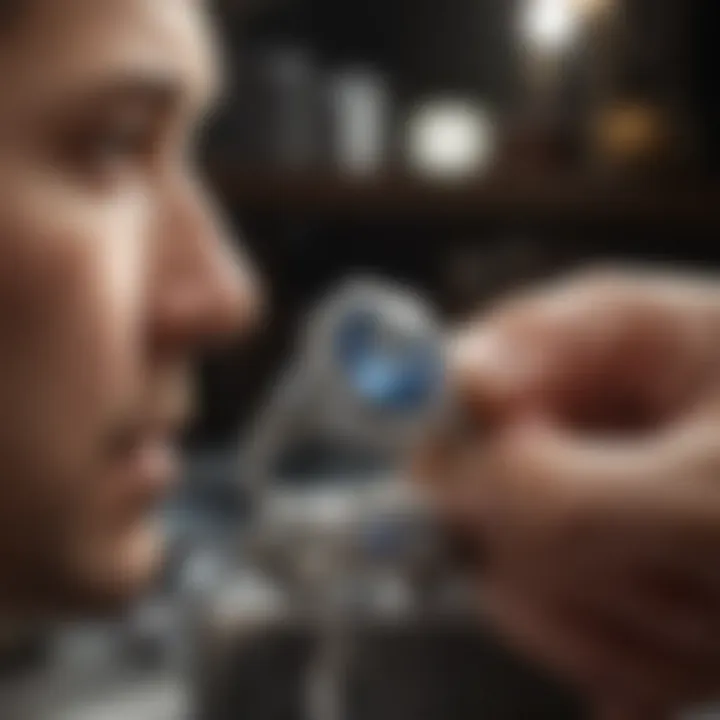
- Auction Houses: Reputable auction houses can fetch high prices due to their established clientele.
- Jewelry Resellers: Specialized jewelers may provide the opportunity for a quick sale, albeit at a potentially lower price point.
- Online Platforms: Websites such as Reddit or specialized marketplaces like eBay enable sellers to reach a broad audience.
Cultural Significance of Engagement Rings
Engagement rings play a crucial role in various cultures, functioning as symbols of love, commitment, and societal values. The significance extends beyond mere ornamentation; it encompasses emotional and social dimensions that impact both personal relationships and broader cultural narratives. This section will explore these dimensions and attempt to articulate the substantive importance of these rings within diverse contexts.
Symbolism in Relationship Commitment
At its core, the engagement ring symbolizes a promise. It represents a commitment to a future together and the intent to marry. The act of presenting an engagement ring often coincides with a pivotal moment in a couple's relationship, marking the transition from dating to a more serious engagement phase. In many cultures, the ring serves as a tangible reminder of this promise.
The choice of the ring itself carries significance. For example, a diamond engagement ring is often viewed as a classic representation of enduring love. The durability of diamonds can be seen as a metaphor for the strength of the relationship. On the other hand, alternative gemstones may symbolize uniqueness and individuality, reflecting the personalities of those involved.
Moreover, engagement rings can also serve communal roles. They can spark conversations among friends, family, and colleagues, signaling relational statuses. Ultimately, they highlight the importance of connection and societal recognition of love.
Regional Variations
Cultural practices surrounding engagement rings vary significantly across regions. In Western societies, the diamond engagement ring has become the standard. This trend owes much to marketing campaigns by companies like De Beers in the mid-20th century, which effectively created a cultural norm linking diamonds with engagement and marriage.
Conversely, in some Eastern cultures, rings may not even be part of the engagement process. In countries like India, instead of a ring, couples may exchange other items or perform specific rituals signifying their commitment. Here, the importance is more focused on family bonds and societal approval rather than the jewelry itself.
In Scandinavian countries, it is common for both partners to wear engagement rings. This contrasts with many other cultures where typically only the woman wears one. These variations showcase how cultural perceptions of relationships manifest differently, reflecting distinct values and traditions.
Psychological Impact of High-Value Rings
High-value engagement rings also carry psychological implications for both the giver and the receiver. From the giver's perspective, the value of the ring can translate into perceived worthiness. A lavish ring may signal financial stability and emotional investment, potentially impacting the dynamics of the relationship.
For the recipient, the ring can influence self-image and value perceptions. A high-value engagement ring may bolster feelings of confidence and desirability. Alternatively, the pressure to purchase or receive such rings can lead to stress and anxiety for many individuals.
An engagement ring becomes not only a piece of jewelry but also a pivotal element of identity and status. The societal value associated with different types of rings affects personal expectations and experiences of commitment.
"An engagement ring is not merely artistry in a gemstone; it embodies emotional and social narratives that shape individual identities and cultural traditions."
The cultural significance of engagement rings is deeply intertwined with love, commitment, and socio-economic factors. It is this intricate web of meanings and values that elevates engagement rings from simple adornments to powerful symbols within the gem industry.
Consumer Considerations
Consumer considerations are pivotal when navigating the intricate world of engagement rings, particularly those within the 500,000 price range. This sector of the jewelry market demands not only substantial financial commitment but also informed decision-making. Buyers must evaluate factors such as personal preferences, investment potential, and the emotional significance behind their selections. Understanding these elements will profoundly shape the buying experience and the eventual satisfaction with the purchase.
Choosing the Right Gemstone
Selecting the right gemstone is perhaps the most critical step in the engagement ring buying process. Each gemstone carries its unique character and story. For instance, diamonds symbolize enduring love and commitment, which makes them a popular choice. However, alternatives like sapphires or emeralds are rising in favor due to their distinct hues and personal meanings.
Buyers should consider:
- Color and clarity of the gemstone.
- Personal significance or emotional ties to a stone.
- How the gemstone complements individual styles.
These aspects will inform not only the aesthetic appeal but will also ensure that the choice resonates with the wearer on a deeper level.
Understanding Pricing Structures
Pricing structures in the high-end engagement ring market can be complex and multifaceted. At the 500,000 mark, consumers encounter a blend of materials, craftsmanship, and branding which all contribute to the final price tag.
Factors affecting pricing include:
- Gemstone quality: Factors such as cut, color, clarity, and carat weight significantly influence cost.
- Metal choice: Different metals, like platinum or gold, come at various price points.
- Brand reputation: Well-known jewelers can charge premiums for their name and craftsmanship.
- Market demand: The popularity of specific styles and trends can affect availability and prices.
Understanding these elements allows consumers to feel more confident in their purchasing decisions.
Quality over Quantity: Insights on Ring Selection
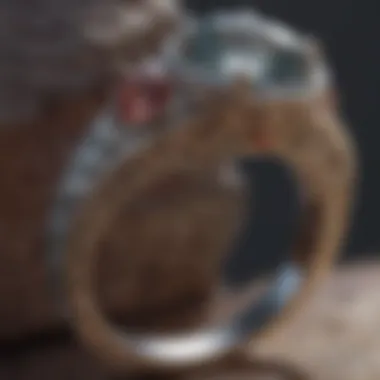
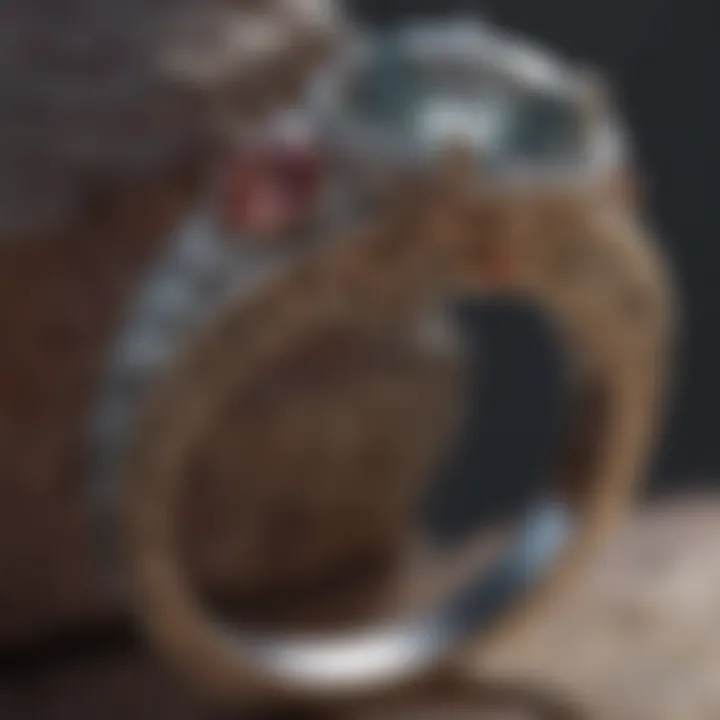
In the context of high-value engagement rings, the adage "quality over quantity" holds particular relevance. With vast choices available, it becomes essential to focus on the craftsmanship and design quality rather than simply the number of options available. Opting for a piece made by skilled artisans ensures durability and elegance.
Buyers should be mindful of the following:
- Attention to detail in design and stone setting.
- Reputable sources that ensure high-quality standards.
- Personal preferences that define what makes a ring extraordinary.
Ultimately, a well-selected engagement ring reflects not only the financial investment but also the emotional significance attached to it.
"A ring is more than just an ornament; is an expression of love, commitment, and personality."
Being conscious of these considerations helps the consumer navigate the market with clarity, ensuring that their selection aligns with both their desires and the cultural significance behind engagement rings.
Role of Jewelers in the High-End Market
The role of jewelers in the high-end market is crucial, particularly in the context of choosing engagement rings that command prices around the 500,000 mark. Jewelers are not just retailers; they are artisans, consultants, and educators within a complex gemstone market. Their expertise shapes buyer experience, guiding clients through a maze of options available to them. As the market grows, the significance of jeweler involvement expands, emphasizing their influential position.
Navigating the Selection Process
Selecting an engagement ring at this high price point requires careful thought and consultation. Jewelers play a pivotal role in navigating this selection process. Their knowledge encompasses various types of gemstones, metal qualities, and design intricacies. Most importantly, jewelers assist buyers in aligning their personal tastes with market offerings. For instance, potential buyers may benefit from discussions about cuts, colors, and settings that best reflect individual personalities.
Buyers can also expect guidance on brand prestige and craftsmanship, aiding in understanding not just what they are buying, but also why the piece holds value. It's essential for jewelers to create an atmosphere where buyers feel comfortable to ask questions, express concerns, and even reconsider initial selections. This personalized service can make a huge difference in the purchasing experience, ensuring that consumers feel satisfied and well-informed.
Ethical Sourcing Practices
In the high-end jewelry market, ethical sourcing practices have gained prominence. Consumers today are more aware of the impact that their purchases can have on communities and the environment. Jewelers who prioritize ethical sourcing can set themselves apart in this competitive industry, particularly in the luxury segment.
A reputable jeweler will provide transparency regarding the origins of their gemstones. This can include certifications that ensure gems are conflict-free and mined with environmentally responsible methods. Clients often appreciate when jewelers offer insights into sustainable practices. Buyers are generally inclined to support brands that align with their values.
Furthermore, ethical sourcing extends to the materials used in ring settings as well. Jewelers should communicate their commitment to using recycled metals or responsibly mined resources. This focus not only contributes to a more responsible industry but can also enhance the ring’s appeal to socially conscious consumers.
Personalization and Customization Trends
Personalization trends are shaping the luxury engagement ring market. Today, many couples seek unique pieces that reflect their individual stories and styles. Jewelers are adapting to this demand by increasing offerings in customization.
Buyers now have the opportunity to create one-of-a-kind rings. This involves selecting the type of gemstone, metal, and even the specific design details. The ability to engrave personal messages or choose a unique setting can add significant emotional value to the ring. Jewelers facilitate this process by offering design consultations, where they translate clients' ideas into tangible concepts.
Indeed, customization not only fosters a deeper connection between the wearer and the jewelry but also enhances the ring’s uniqueness. Consumers are more inclined to invest in an engagement ring when they feel a personal touch has been integrated into its creation.
By prioritizing personalization, jewelers ensure that their offerings stand out in a crowded marketplace, making the high-value engagement rings even more precious in the eyes of the buyer.
Overall, the role of jewelers in the high-end market is multi-dimensional. They provide guidance throughout the selection process, ensure ethical practices and adapt to emerging trends for personalization. This intricate web of responsibilities is vital for offering an enriching and trustworthy experience to discerning consumers.
Future of High-Value Engagement Rings
As we look toward the future of high-value engagement rings, it becomes increasingly important to understand the factors driving this realm within the gem industry. Changes in technologies, sustainability practices, and consumer preferences shape not only what kinds of rings are being designed but also how they are perceived by prospective buyers. Each of these elements intertwines to create an evolving landscape where uniqueness and value converge.
Emerging Technologies in Jewelry Making
Technological advancements are reshaping the jewelry making process. Tools like 3D printing allow for intricate designs that were once too difficult or expensive to create. Such innovations enable designers to experiment with new styles and reduce waste. Alongside this, Computer-Aided Design (CAD) software gives jewellers the capability to visualize and modify ring designs quickly. This not only enhances creativity but also streamlines the production process.
Additionally, lab-grown diamonds and gemstones are gaining traction in high-value segments, offering ethical alternatives that do not compromise on appearance or durability. Consumers increasingly appreciate transparency in sourcing, and lab-grown stones present a compelling narrative of accountability in the gem market.
Sustainability Trends in the Gemstone Industry
Sustainability has become a critical consideration in the gem industry, resonating deeply with a growing segment of consumers. The environmental impact of mining has sparked demand for sustainably sourced materials. Initiatives like the Kimberley Process aim to ensure conflict-free diamonds while promoting fair labor practices. Increased awareness means that consumers are more likely to prioritize rings that adhere to sustainable practices.
Further innovations ensure that these rings not only appeal to ethical considerations but also boast a reduction in carbon footprint. The gemstone industry can no longer ignore the growing concern over environmental degradation. Today’s consumers seek products that align with their values, and the movement towards sustainability will likely continue to shape the high-value engagement ring market.
Potential Shifts in Consumer Preferences
Shifts in consumer preferences are inevitable as demographics change. Younger generations, particularly Millennials and Generation Z, emphasize authenticity and uniqueness in their purchasing decisions. As a result, there is a marked trend towards customized pieces that reflect individuality over traditional designs. This move also extends to the incorporation of alternative gemstones, offering a diversified experience that stands out.
On the other hand, some consumers still hold onto classic preferences for diamonds, valuing their historical significance. Both perspectives coexist and will likely give rise to hybrid approaches, blurring the lines between tradition and innovation. As preferences evolve, so too will the market’s response, encouraging more diverse offerings.
"Understanding future trends allows consumers to make informed decisions that reflect not only personal taste but societal values."
In summary, the future of high-value engagement rings will be shaped by emerging technologies, sustainability efforts, and shifting consumer preferences. Each factor contributes uniquely, ensuring that engagement rings continue to resonate on both personal and broader cultural levels.



